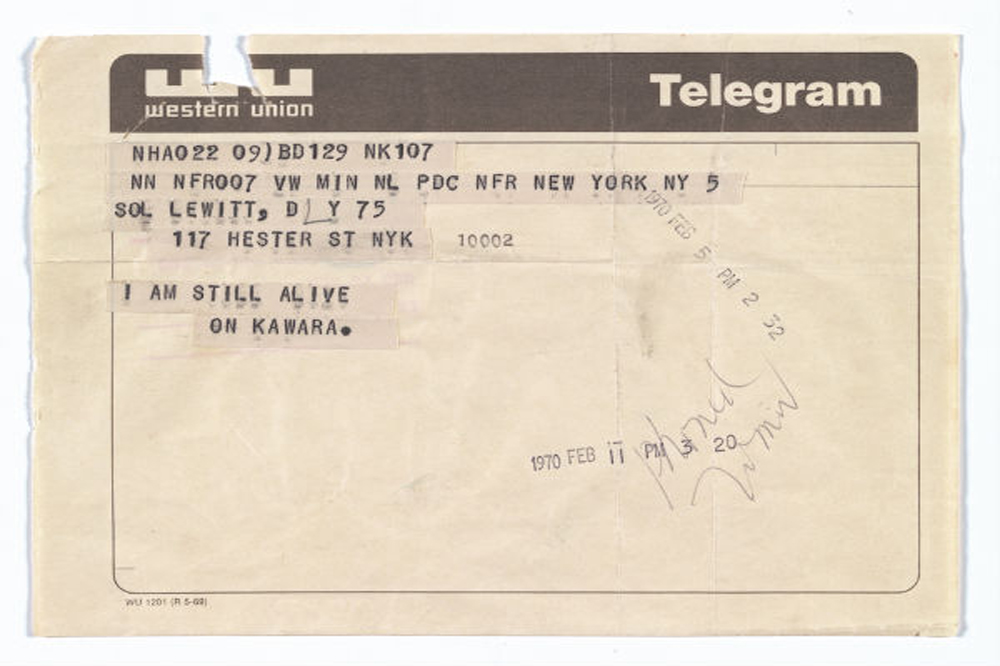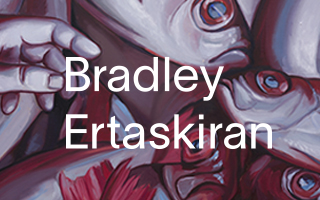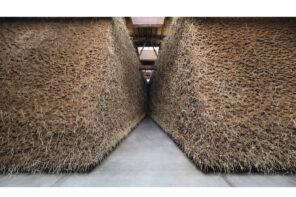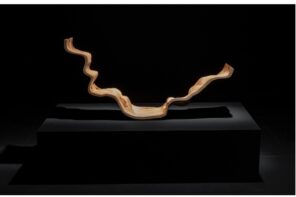In 2009, @on_kawara flickered onto the scene. The Twitter account, whose profile picture is a black square, simply tweeted out once a day, “I AM STILL ALIVE #art,” in homage to one of the most well-known projects by the great Conceptual artist On Kawara, who, starting in 1970, sent telegrams to friends stating, over and over again, “I AM STILL ALIVE.”
I thought of @on_kawara briefly at the opening of On Kawara: Silence, the Guggenheim’s just-opened retrospective. Clearly, @on_kawara is a gimmick, while Kawara himself is one of the true greats, but it at least shows how his demanding and cerebral art chimes with a certain contemporary way of thinking. Filled with his signature Today paintings — austere panels, each proclaiming the date they were made in stark white text against a plain colored ground — and lots and lots of paperwork documenting Kawara’s various projects, this show will, for a lot of people, feel more like doing taxes than must-see museum entertainment. Yet it deserves to be savored, and one way into the work is to consider just how ahead of his time Kawara feels: He was making art about the “quantified self“—the contemporary self-improvement craze for tracking and charting one’s personal data—not just before the Fitbit, but before the handheld calculator.
By all accounts, Kawara was an interesting guy. He was born in 1933 in Japan, and came of age in the smoldering post-war period, achieving early notoriety in Tokyo as an artist steeped in the day’s mordant political surrealism (none of the works from this period, sadly, make it to the Guggenheim). In 1959 Kawara moved to Mexico, where according to Rubén Gallo he painted a now-lost mural of the plumed serpent Quetzalcoatl and was enough a part of the scene that he was featured in a show of young Mexican painters that traveled to Colombia. There was also a formative trip to France in 1964, which inspired some suggestive early drawings. A wall of these make it to the Guggenheim, looking somehow precise but indistinct, full of tables of phrases, spidery charts, and opaque diagrams, like sketchbook pages from an alien reconnaissance mission.
This personal background hardly matters though, because when Kawara hit his creative stride in the mid-1960s as part of the international outbreak of Conceptual art, the key animating energy came from the uniquely indirect way he fused his work with his own biography. Kawara never gave interviews, and did not explain his work; the rigor of his reticence is quite amazing, and must have required some effort given his ultimate fame. In effect, it was a kind of negative performance. At the same time his work is all about himself. He spun art out of existential metadata — not the content of his life but its wreaths of attendant information — and his art ends up being about both how little and how much you can know from such stray facts, a half-century before the subject became a political hot-button issue in our epoch of data paranoia.













